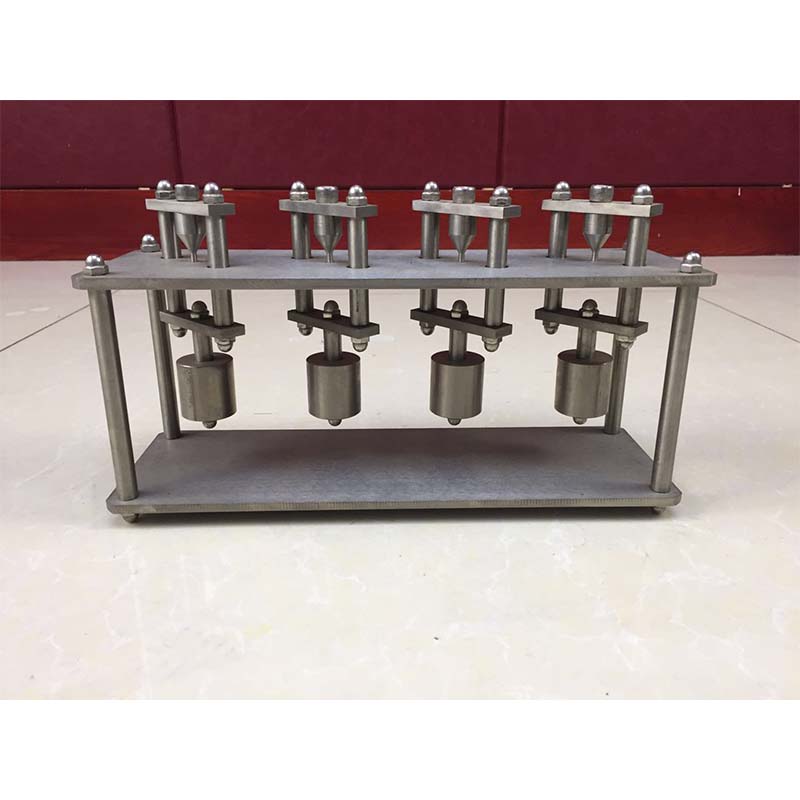cable burning test chamber
Understanding the Cable Burning Test Chamber Safety and Standards in Cable Manufacturing
In the field of cable manufacturing, ensuring safety and reliability is of utmost importance. One of the crucial tests performed to guarantee that cables meet safety standards is the cable burning test, commonly conducted in a specially designed environment known as the cable burning test chamber. This chamber plays a vital role in evaluating the flammability and smoke emission characteristics of electrical cables, thereby ensuring they can withstand fire hazards in real-world applications.
The cable burning test chamber is engineered to create controlled and standardized conditions for conducting fire tests on various types of electrical cables. The testing process typically involves subjecting the cables to a flame, while monitoring their performance in terms of ignition, flame spread, and smoke production. By simulating real-life fire scenarios, manufacturers can identify potential weaknesses in their cable designs and materials, leading to improved safety features.
One of the key standards for cable testing is the IEC 60332, which specifies methods for measuring the vertical flame spread of a single insulated wire or cable. The burn chamber allows for the implementation of such tests effectively. It is equipped with temperature control mechanisms, exhaust systems, and monitoring equipment to ensure compliance with safety regulations. In addition to IEC standards, cables may also be tested according to other international and regional standards, such as UL, BS, and CSA, depending on the target market.
cable burning test chamber

A well-designed cable burning test chamber will include a variety of safety features to protect operators and ensure accurate results. These features may include state-of-the-art ventilation systems to manage smoke and fumes, fire suppression systems to mitigate risks, and high-quality materials that can withstand elevated temperatures. Moreover, the chamber should be spacious enough to accommodate various cable sizes and configurations, allowing for flexibility in testing different products.
The results obtained from the cable burning tests are crucial for manufacturers as they provide insights into the properties of the materials used in their cables. Cables that exhibit high flame spread rates or produce excessive smoke are less desirable, particularly for use in buildings and confined spaces. By analyzing test data, manufacturers can make informed decisions about material selection, insulation types, and overall design modifications to enhance fire resistance.
Beyond compliance, manufacturing cables that perform well in fire tests is also a matter of corporate responsibility. As the world becomes more aware of fire safety risks, consumers increasingly demand products that provide better protection against fire hazards. Manufacturers that prioritize safety through rigorous testing not only comply with regulations but also build trust with consumers. This can lead to a competitive advantage in the marketplace.
In conclusion, the cable burning test chamber is an essential tool in ensuring the safety and reliability of electrical cables. By adhering to international testing standards and conducting thorough evaluations, manufacturers can mitigate fire risks and enhance the performance of their products. As the demand for safer electrical systems continues to grow, the importance of rigorous cable testing will only increase, underscoring the value of the cable burning test chamber in the industry. Ultimately, investing in such testing capabilities reflects a commitment to safety, quality, and consumer trust, which are imperative in today's market landscape.
-
Why the Conductor Resistance Constant Temperature Measurement Machine Redefines Precision
NewsJun.20,2025
-
Reliable Testing Starts Here: Why the High Insulation Resistance Measuring Instrument Is a Must-Have
NewsJun.20,2025
-
Flexible Cable Flexing Test Equipment: The Precision Standard for Cable Durability and Performance Testing
NewsJun.20,2025
-
Digital Measurement Projector: Precision Visualization for Modern Manufacturing
NewsJun.20,2025
-
Computer Control Electronic Tensile Tester: Precision and Power for the Modern Metal Industry
NewsJun.20,2025
-
Cable Spark Tester: Your Ultimate Insulation Assurance for Wire and Cable Testing
NewsJun.20,2025
 Copyright © 2025 Hebei Fangyuan Instrument & Equipment Co.,Ltd. All Rights Reserved. Sitemap | Privacy Policy
Copyright © 2025 Hebei Fangyuan Instrument & Equipment Co.,Ltd. All Rights Reserved. Sitemap | Privacy Policy
